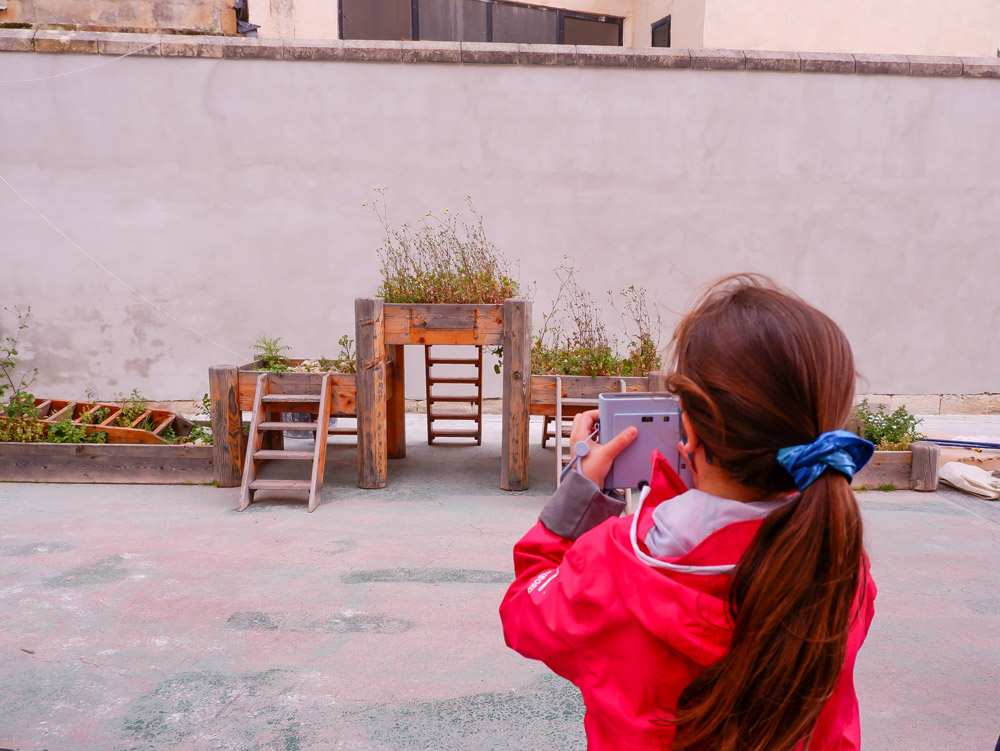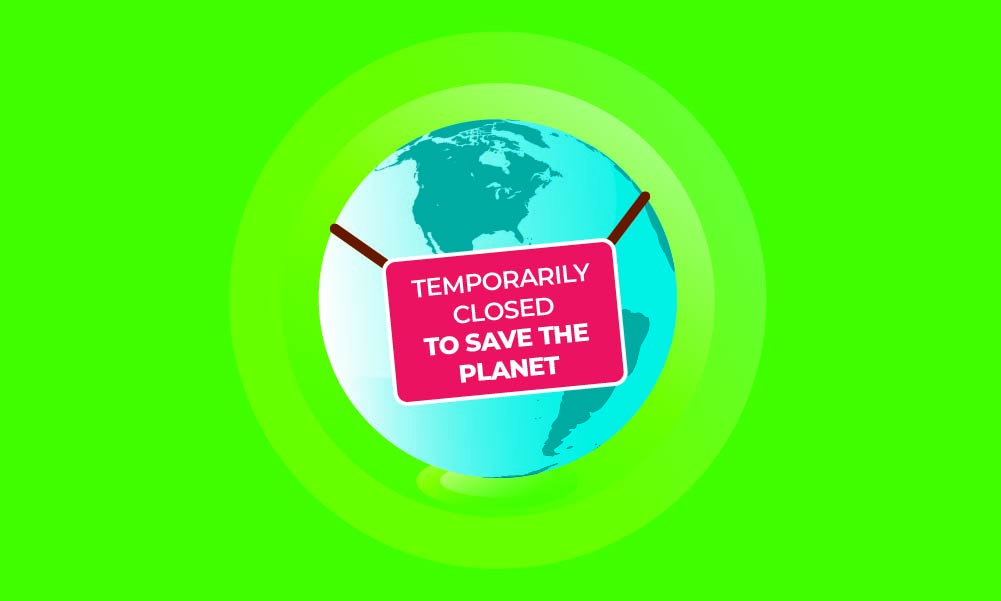The global cosmetics industry is a multi-billion euro business that shows no signs of slowing down. A large percentage of this evaluation is attributed to product packaging, which introduces a considerable environmental issue due to the skyrocketing demands for plastic packaging.
Continue readingGzira: How to Make a Leaner, Meaner, Greener City
Over half the global population now lives in cities. As the march of urbanisation trudges on, cities across the globe face mounting pressure to think of urban and green futures for communities in the face of the climate crisis.
But creating a plan for a sustainable future risks missing the green mark if citizens are not given a seat at the table to express their needs and desires, leading to a waste of resources or solutions that no one uses.
An ambitious EU project called VARCITIES is aiming to lead the way with tangible, nature-based solutions that put citizens at the forefront of greener future cities. At present, seven pilot cities (including one seaside locality in Malta, Gzira) are testing and implementing a series of these community-based actions for better creativity, inclusivity, health, and happiness for their citizens.
THINK caught up with two of the team members, Kurt Calleja and Emma Clarke, to talk about the project.
How it All Began
According to Calleja and Clarke, the key first step was to identify characteristics of the pilot sites, which in Malta was Gzira. Then, it became important to talk to various stakeholders: experts, the local council, and most importantly, the locals in order to map out the project’s blueprints.
‘Through this, we identified multiple benefits and how various groups stand to gain from the project. We then considered unforeseen outcomes for the project to try to be as realistic as possible,’ Calleja says.
‘I say realistic because there are several misconceptions about environmental sustainability,’ he adds. ‘There is more to it than simply planting a few trees. The problem is far more complex and requires proper, long-term planning.’
In fact, a workshop held in June 2022 with local residents found that persistent frustrations included a severe lack of green open spaces, limited walkability because of narrow pavements, poor air and noise quality, and a need for more pedestrian routes.
How to Make a Greener, Meaner City
VARCITIES is trying to do a lot. Firstly, it wants to implement micro-greening interventions on a main artery of Gzira, Triq D’Argens, which currently does not have any sort of greenery and is rife with noise and exhaust pollution. This will be implemented through a participatory design process which includes residents, educators, creatives, and experts.
The project also focuses on urban diversity, education, and engagement through innovative pop-up parks and events. It wants to develop a co-created community garden project. The garden, Calleja explains, will be implemented in a collaborative way with artists such as Laura Besancon, an artist in playful interactions who has worked with the children of Gzira Primary School to design the playground.
‘The idea is not to just build a garden and leave it at that. We want to know what residents actually want, not just plant a few trees and build concrete structures,’ he continues.
In other words, they want to make sure it’s going to be used. Currently, the team has observed that playgrounds are not being used by people or children because they were not designed with the users in mind.
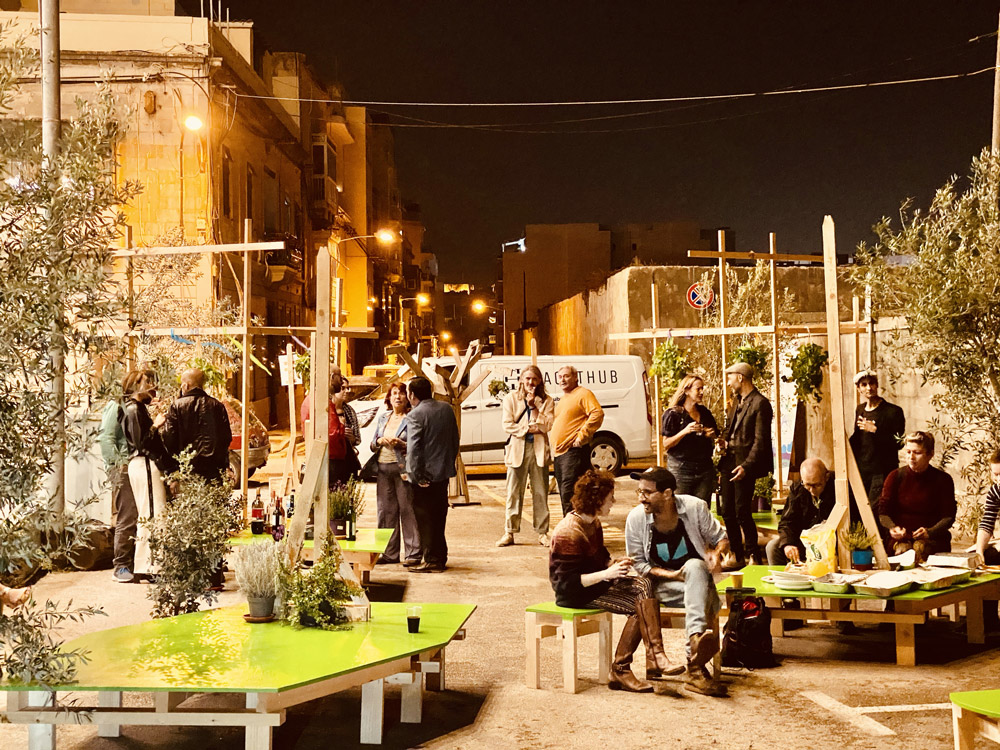
The ‘Human-Centred’ Approach to Design
For the playscape, the VARCITIES team organised workshops with school students, both to educate and as a form of data collection. The playscape is ‘human-centred’ but is also designed according to a need for better biodiversity in order to improve the ecosystem and attract more insects through greening.
In the first workshop with the school children, the team took an ethnographic approach through two parts: visual and experimental.
‘We invited children to go around school to capture photos of places that mean something to them. Then we moved to a more auditory-based practice: we asked the children to document the sound environment of their school, to really actively listen rather than just hear,’ Calleja says.
The soundscapes made by the children were unsurprising; they were sounds of constant traffic, construction, and some bird sounds.
‘Something that stuck out was that even though noise is a part of their everyday culture, it was still something very bothersome and disruptive for them,’ Clarke says.
‘Without any accessible greenery around, they feel disconnected from nature and gravitate more towards their phones,’ she adds.
In the following workshop, the children were asked to unleash their creativity. A blank canvas was laid out, and they were asked to design their ideal playground, a chance to brainstorm and think together on what a future part of their school could be. Now, their artworks are being used as inspiration for the final design of the playscape.
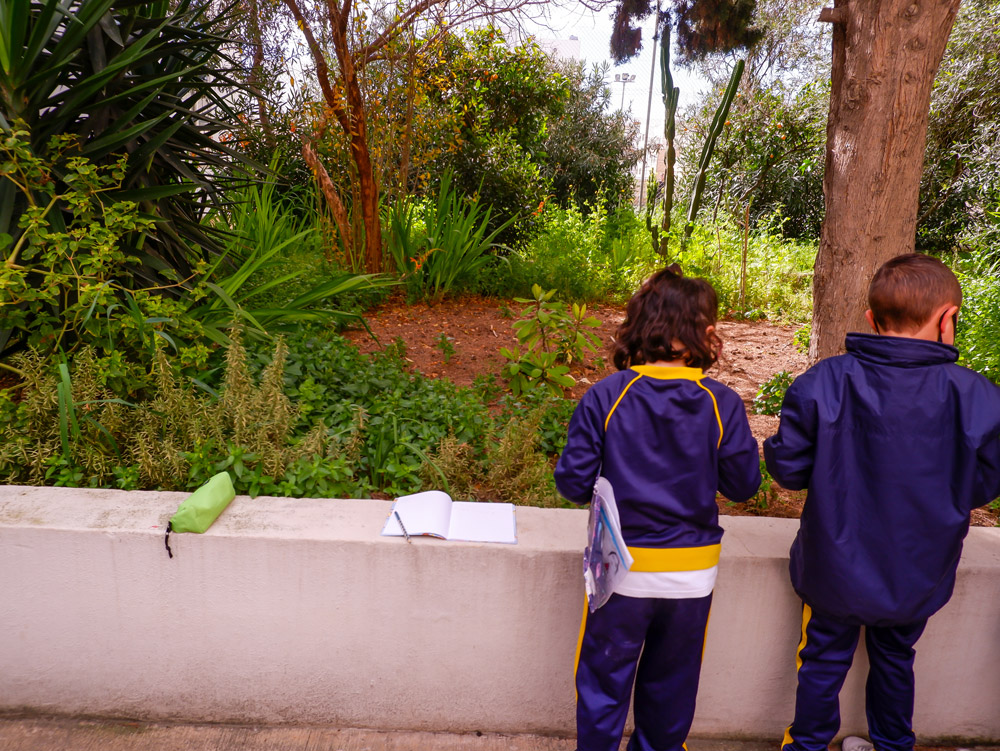
In one last intervention, the team held a planting and propagation workshop, and the plants they nurtured will be used in the actual garden. It’s a wholly collaborative and educative process. In addition to designing the playscape/community garden, the VARCITIES team have hosted a series of pop-up parks around Triq D’Argens throughout November. These parks provided space for social interactions as well as art and science installations, all done in collaboration with local business, citizens, artists and NGOs.
A Blueprint for Going Green Globally
Ultimately, the goal is to build more inclusive and greener cities, and city-based projects like this will let stakeholders evaluate how efficient and effective nature-based solutions are. Initiatives like VARCITIES that use bottom-up, citizen-oriented approaches could become models to build our future cities now.
‘We believe in using the bottom-up, citizen-oriented approach for sustainable solutions for cities. The idea is to eventually be able to see what works and what doesn’t, learn, and upscale the approach, to champion sustainable solutions and improve our lives,’ Calleja said.
Cities that cater for our needs and desires as citizens as well as change the course of climate disaster should not be a utopian fantasy. The interventions done in Gzira could be the green blueprints for everyone’s future.
VARCITIES is an H2020 funded EU project (grant agreement: grant agreement No 869505) led in Malta by Dr Ing. Daniel Micallef (Faculty for the Built Environment) who is supported by academics in the Faculty of Education, Faculty of Science, and Faculty of Engineering including: Dr Edward Duca, Antoine Gatt, Carlos Canas, Dr David Paul Suda, Prof. Emmanuel Singara, Dr Kenneth Scerri, Dr Sarah Scheiber, Dr Simon Borg, Prof. Vincent Buhagiar, and Dr Mark Caruana.
This project is supported by Arts Council Malta.
Eco-Anxiety
Have you ever felt stressed about your future when hearing about environmental issues and climate change in the news? Have you ever felt particularly anxious about the future of humanity and our planet? Well I can assure you, you are not alone.
There is a formal term for this phenomenon: eco-anxiety. The American Psychology Association describes eco-anxiety as ’the chronic fear of environmental cataclysm that comes from observing the seemingly irrevocable impact of climate change and the associated concern for one’s future and that of next generations.’ While this is not yet considered as a psychological illness, it can have numerous mental consequences in some people.

Eco-anxiety does not affect everyone in the same manner. Various studies in the last few years have shown that eco-anxiety tends to impact younger generations the most, mainly children and youths. Surveys show that many young people rank climate change as the most significant societal problem. In one recent study published in The Lancet Planetary Health and conducted in 10 different countries among 16 to 25-year-olds, 59% of respondents stated that they are very or extremely worried, while 84% of participants said that they felt at least moderately worried.
Moreover, the majority of respondents ‘felt sad, anxious, angry, powerless, helpless, and guilty,’ about climate change. Eco-anxiety also tends to be more prevalent among people who are aware of the environment and knowledgeable on climate change. This group feels largely responsible for solving this problem that has been dumped onto its shoulders by governmental inaction and earlier generations.
This might also explain why it is quite common for young students studying in the environmental field to feel the symptoms of eco-anxiety. As a student currently following a sustainability-related course, I am aware that it can get quite overwhelming. In fact, as part of a recent Sustainability Week on university campus, a workshop was organised to help students cope with the symptoms of eco-anxiety. While coping mechanisms vary from one individual to another, these are some things you can try out if you find yourself in a similar situation:
- Explore a healthy outlet to give your thoughts a break through physical exercise, meditation, and deep breathing.
- Share your feelings with friends or note them down in a journal.
- Take tangible action by making small but necessary lifestyle changes.
- Make your voice heard through lobbying, petitions, and marching in the streets, or by joining sustainable organisations.
Is BIM the solution to Malta’s Construction Woes?
While the construction industry in Malta is facing many challenges, Building Information Modeling (BIM), is rising globally. Can BIM become the solution to Malta’s construction challenges?
Continue readingHibernating Humans
As lockdowns spread worldwide and grounded planes crippled international tourism, humanity cut the environment some long-awaited slack. With the climate change debate heating up (proportionally to the planet’s temperatures), THINK investigates what would happen if humanity’s only chance to preserve our planet is a yearly 3-month lockdown?
Continue readingPutting a Price Tag on Quality of Life
Alternative measures for a country’s success beyond measuring Gross Domestic Product (GDP) are needed. Wellbeing and quality of life do not always follow from economic growth. This realisation goes as far back as the 19th century. Air pollution triggered one of the first societal shifts to improve the environment. The factories of the Industrial Revolution blanketed cities like London in smog, which as early as 1891 led to urgent and severe government action in the form of the Public Health Act. Polluting businesses faced financial penalties unless they cleaned up their act. Air pollution in London has decreased ever since.
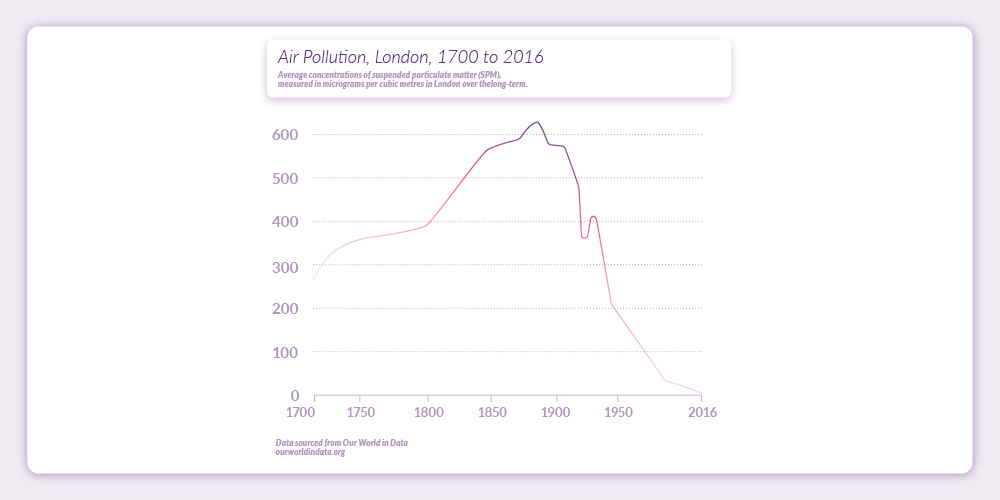
This brings us back to how GDP can be replaced as a measure of a country’s success. Quality of life and wellbeing are hard to measure; however, they are important to measure since they also have a tangible impact on the economy. Unhappy and unhealthy people inflate a country’s healthcare costs, and stressed workers produce poorer quality work. A community rendered unrecognisable due to rampant overdevelopment has consequences on people’s sense of place, purpose, and identity.
One of the world’s leading reinsurers, Swiss Re Institute, recently released its Biodiversity and Ecosystem Services Index, explaining that 55% of global GDP is dependent on ecosystem and biodiversity services. Malta is listed in the top five countries at risk of ecosystem collapse as a result of a decline in biodiversity services — worrying news for Malta. This index demonstrates that progress is being made to understand the relationship between our environment, our financial success, and our wellbeing in ways which many would not have imagined a few decades ago.
Our economies have been built on the assumption of eternal abundance. As we push up against our natural limits, we are no longer plucking wild fruit, but we are robbing and harming our neighbours, even when this is not immediately obvious. Take deforestation of the Amazon, which directly impacts every person on Earth. Such consequences mean that we must redefine where we consider our rights to begin and end. Short-sightedness and short-term gains lead to the Tragedy of the Commons, where everyone ends up losing when instead everyone could have gained.
The European Union is trying to rebalance things internationally. Its Carbon Border Adjustment tool will penalise unsustainable products entering the EU’s single market from third countries. Such policy instruments are being increasingly refined and adopted, but not quickly enough. To prevent ecosystem collapse and reduce climate change, we must start recognising the true value of our natural resources today, not tomorrow. Malta certainly has the potential, as a small country, to be a leader and set an example for others to follow.
Keepers of the Past and Pioneers of the Future
Museums are a portal into the past. To create a sustainable future demands understanding and learning from this past. From Art Strikes to Biomimicry, Sandro Debono explains how many modern museums are taking a more active role in shaping the way our future unfolds.
My museum and curatorial practice have always been informed by theory and hands-on practice. Thinking through problems to find appropriate solutions informs my practice throughout, and recent circumstances have made me aware that this has become a highly sought-after skill. The COVID-19 pandemic can be seen as a negative disruptor. I prefer, instead, to consider the silver lining whereby the pandemic becomes an accelerator for change. The silver lining is for that potential for change to happen in significant and tangible ways — which is where museums come into the picture.
We rarely think about museums as public spaces where collections become resources that inform discussions and rethinks of long-established narratives and perspectives oftentimes considered by many as cast in stone. The museum is often understood as a tangible metaphor or a stereotypical idea rather than a response to the needs of a particular ecology to which it relates and responds to.
At the other end of the spectrum, climate action has been on the national agenda in fits and starts, with the country now unveiling an ambitious climate action plan to achieve net-zero emissions over three decades. Perhaps the most symbolic action is the unanimous declaration of a climate emergency by Malta’s national parliament in 2019. The reduction of greenhouse gases and extensive use of renewable energy resources has been on the national agenda for close to a decade or so. There is no question that Malta will be impacted in one way or another through rising sea levels and other effects. There is much that needs to be done, and the willingness to address this ever-pressing challenge requires increased awareness and outreach. Museums and climate action are far from being dissonant, disconnected voices. Indeed, one can become the voice of the other in meaningful ways.
Climate Action Advocacy
Museums have a voice. They also have things to say that are equally relevant to the present as much as they are to the past. One of these pressing matters, temporarily displaced to the shade of the COVID-19 pandemic, is climate change and the ever-more-pressing need for action. The obvious choice of institutions to take action would be science and natural history museums. Indeed, the International Committee for Museums and Collections of Natural History (part of the International Council of Museums), has been exploring ways and means to stimulate conversations about climate change. The international museum landscape has welcomed new museums dedicated to climate change in Hong Kong (Jockey Club Museum of Climate Change), Germany (Klimahaus 8°), China (Low-Carbon Science and Technology Museum) and Oslo (Klimahuset) since 2013. The entire international museum landscape has been active on this issue for quite some time. An ever-increasing number of museums have featured climate change in their public programming, and some are joining forces more than ever before. One example is the Coalition of Museums for Climate Justice, mobilising Canadian museum workers and their organisations to develop public awareness, mitigation, and resilience in the face of climate change.
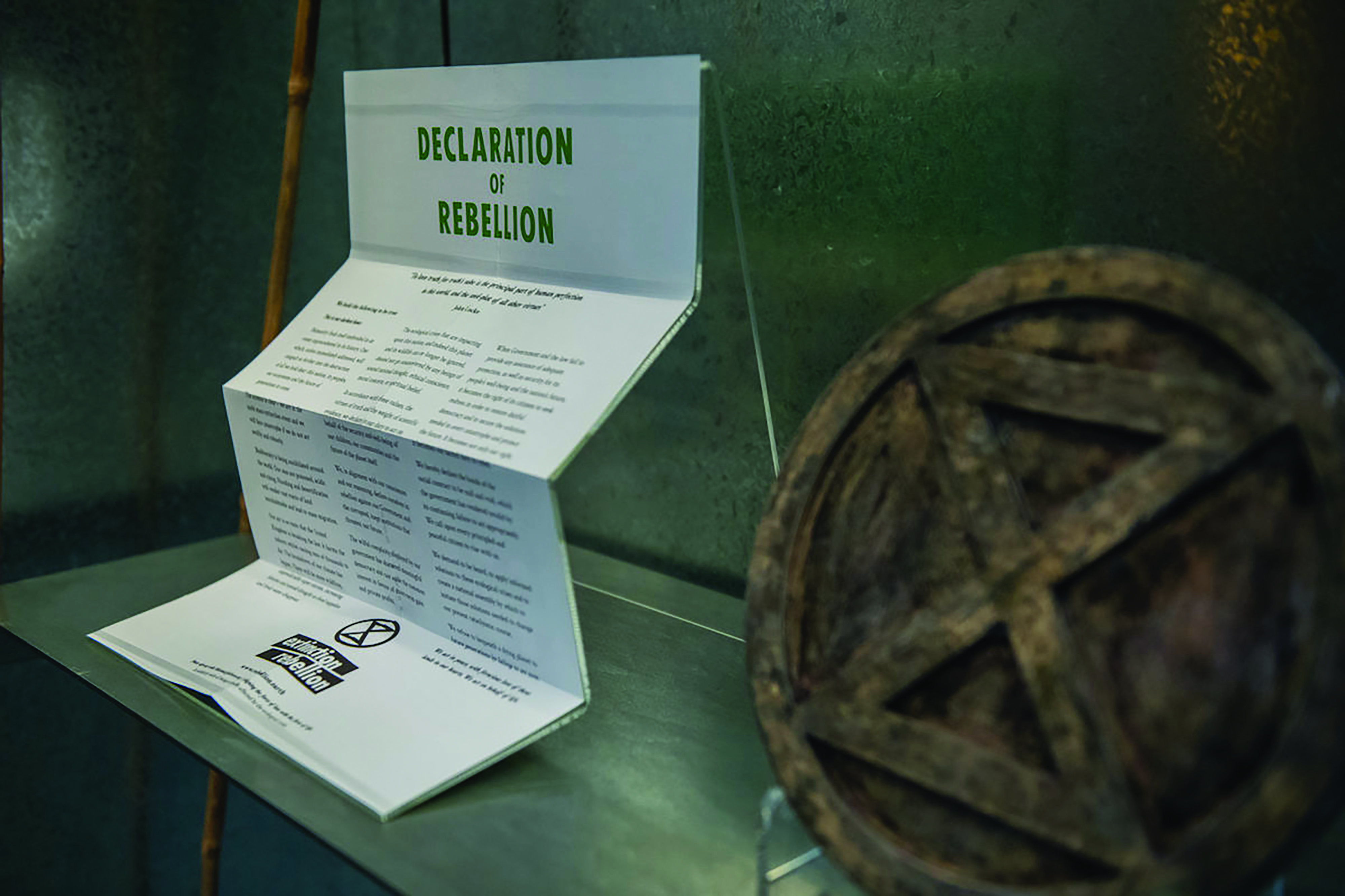
Last year, the Museums for Future movement was launched. It is a global collection of museum workers, cultural heritage professionals, and many others in support of Greta Thunberg’s Fridays For Future Movement.
Museums can be both advocates and activists. One particular action hitting the headlines, also promoted by Museums for Future, is the art strike. This works by museums covering artworks on environmental subjects or themes for a day. The platform has a toolkit to guide and support institutions interested in calling art strikes. The Victoria and Albert Museum took things one step further. It partnered with Extinction Rebellion, the activist group calling for urgent climate action, to present exhibitions featuring material culture created for the purpose of protest. Since then, the museum has acquired artefacts produced for the purpose of protest, comparing the visual impact of the group’s campaigns to that of the suffragettes.
The Environment as Mentor
Protests have a flipside. Museums can become more aligned to natural processes. Museums can reduce their carbon footprint. Another step is to recycle and use eco-friendly materials in exhibition displays. Aligning museum institutions and their role in contemporary societies as public spaces is where biomimicry thinking comes into the picture.
Biomimicry is an approach to innovation informed by adopting strategies found in nature for the purpose of developing sustainable solutions to human challenges. Janine Benyus’ book Biomimicry: Innovation Inspired by Nature (1997) popularised this thinking. For biomimicry, innovation is informed by the natural world, leading to rethinking workings, management models, programming, and outreach. It is about the willingness to shift from ‘how might we’ to ‘how would nature’ do it in order to understand the underlying principles of nature for museums to create symbiotic relationships with their neighbours.
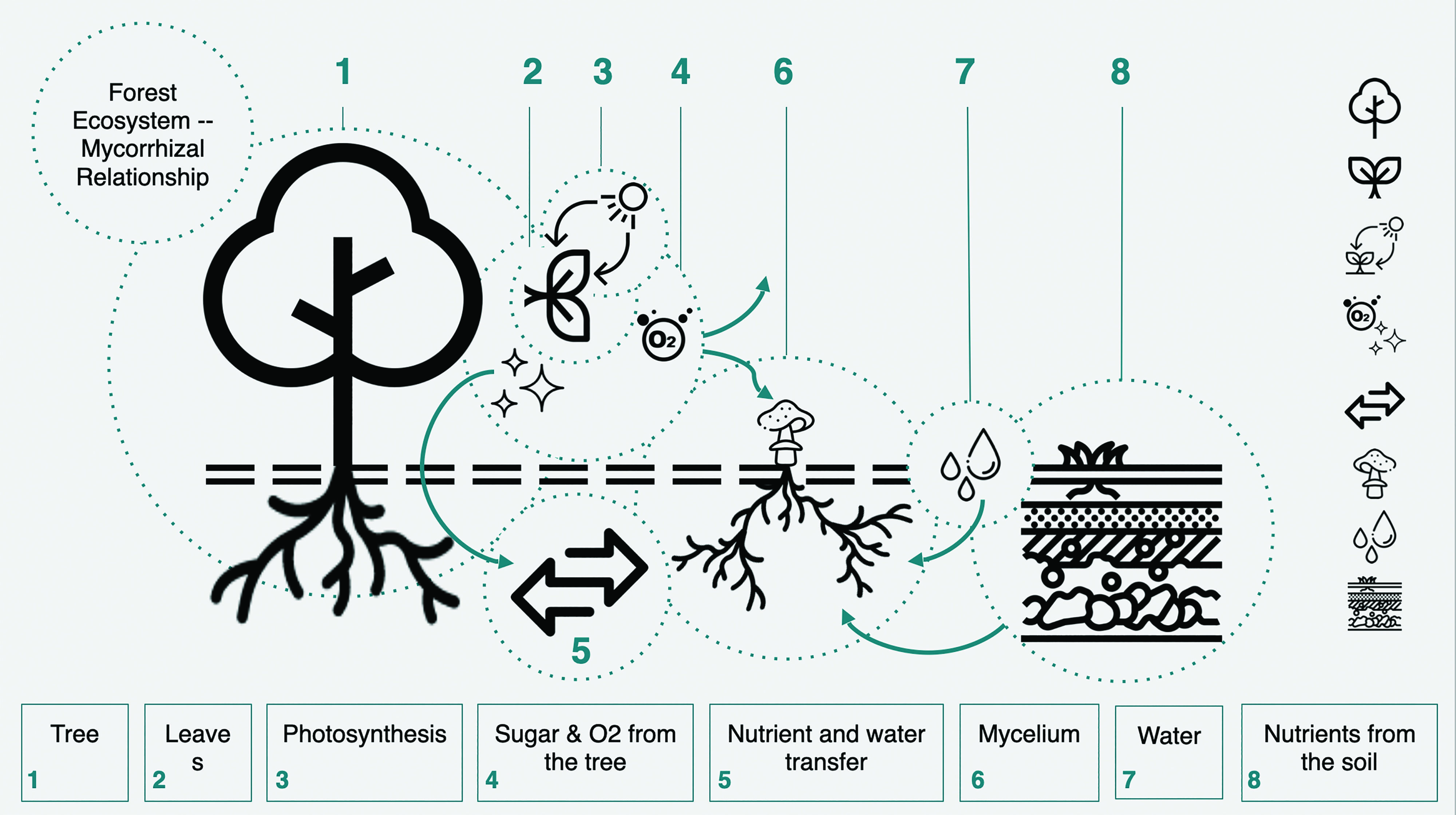
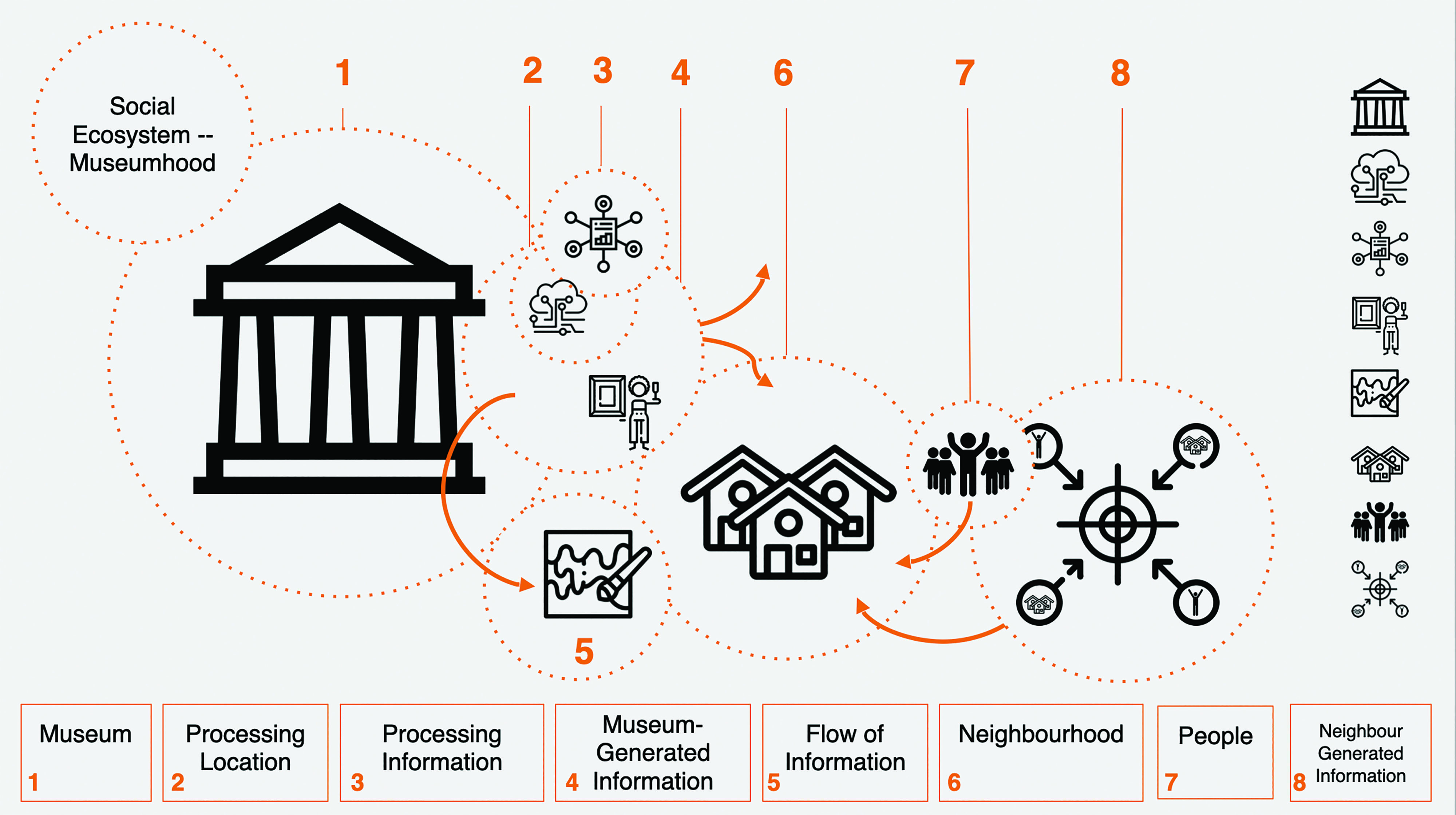
Biomimicry thinking can inspire museums to adapt, rethink, and reinvent themselves. Biomimicry can help museums understand the ecosystem they exist in and how it differs from nature. The institution would also need to translate science-driven and nature-informed biological data into design principles. Impact and sustainability would need to shift from the yardstick of efficiency and numbers, to the extent of systemic innovation introduced and the impactful change it has on the museum.
By looking closely at natural ecosystems, we can reinvigorate and reimagine the way museums operate, expanding their outreach and engagement in sustainable and innovative ways.
Further Reading
Museums & Climate Change Network. Museums & Climate Change Network. Retrieved 1 November 2020, from https://mccnetwork.org.
Museums For Future – Culture in Support of Climate Action. Museumsforfuture.org. Retrieved 1 November 2020, from https://museumsforfuture.org.
The Biomimicry Institute. Biomimicry.org. Retrieved 1 November 2020, from https://biomimicry.org.
Conservationists’ hide-and-seek with seabirds
The Maltese Archipelago hosts nocturnal open seafaring pelagic birds. They have perfected their hiding methods on the rocks, which is great for their survival, but a challenge for researchers. Dilek Sahin writes.
Continue readingPandemic breather
Barely two weeks of the coronavirus lockdown measures had passed before people started posting images of cleaner waters and purified air over industrial zones; nature was healing in our absence. Some of them proved to be hoaxes, but others helped us imagine a better world. Martina Borg spoke to some of Malta’s leading researchers and environmentalists to make sense of the feel-good news.
Continue readingReorganising space for the climate emergency
Author: Miguel Azzopardi
Merely counting greenhouse gas emissions will not address climate change. The solution is closer than we think: our own use of space. Look at land use: switching to a flexitarian, vegetarian and vegan diet is one of the greatest individual contributions. To produce meat, the industry puts heaps of land aside for animals and their fodder. Plant-based diets would mean less land is used for agriculture. Economising space can apply to other areas.
Our transportation model is heavily dependent on car usage. Segregated bus and cycle lanes are rare in Malta, even if these modes of transport allow more people to travel using the same space. Car-pooling in Malta is picking up, but not yet mainstream. COOL is one example of car-pooling initiatives that are slowly gaining traction. Various eNGOs, like Extinction Rebellion Malta, are lobbying for the government to further incentivise public transport. This way, there would be no need to sacrifice agricultural land for road-widening and car-mania. Instead, Malta could start looking into reforestation and rewilding.

Our approach to urban planning would benefit from environmentalist reorganisation. In Malta, developers enjoy a free-for-all. Numerous charming one- or two-storey buildings are choked by neighbouring high-rises. In some instances, people have installed solar panels on their roof only to have them covered by shade. Shade has wasted away gardens and affected mental health — all on a sunny Mediterranean island. Proper planning would allow more uniform streetscapes, urban greening and better utilisation of roof space. The environment minister Aaron Farrugia’s ‘green revolution’ should encompass all planning on the Maltese Islands.
Land reclamation has been proposed as a possible solution to Malta’s limited space. The process does not create space, it repurposes space that already exists. In Malta, this means more environmental destruction as we bury natural habits like meadows of protected seagrass (Posidonia oceanica), which are also valuable carbon sinks. Reclamation is not an option due to the climate crises and widespread presence of Posidonia around our shores. We should be protecting and restoring natural habitats, not destroying them.
Maltese authorities have ignored spatial planning suggestions. Faced with the crisis, Malta needs to acknowledge that if we want to meet ambitious climate emission targets we need to have coherent planning policies and direction that give the environment the priority it deserves.
Miguel Azzopardi is a history student at the University of Edinburgh and an activist with Extinction Rebellion Malta.


